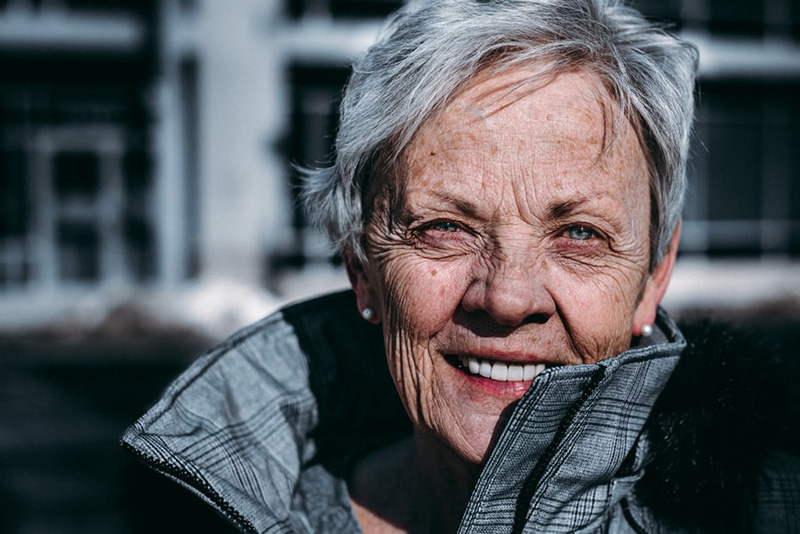When Age Spots Could Be Something More
Skin is the largest and arguably the most impressive organ of the human body. It protects you against diseases, can heal itself after being hurt, and has the natural ability to replace itself over time.
However, as you age, your skin tends to change. The elasticity weakens, and you start to notice your skin isn’t bouncing back the way it once did. Age spots, wrinkles, and sagging are extremely common side effects of the skin the older you get.

Age spots can be a big concern for many people, as they seem to pop up out of nowhere. While most don’t enjoy the look of age spots, there is also another fear these marks carry with them — the idea that they could be something more.
It’s not hard to confuse age spots with melanoma. It’s common for someone to notice a new mark on their body and immediately become concerned. Cancer is a terrifying thought and comes with many complications. It’s one of the main reasons skin cancer life insurance is more difficult to get and typically more expensive than other policies.
With much uncertainly surrounding age spots, it’s essential to tell when one might be something more. If you feel unsure, it’s crucial to always consult with a professional about potential melanoma spots.
What are age spots?
Before determining if an age spot could be something more, it’s important to understand precisely what age spots are. These marks — sometimes referred to as lentigines, lentigos, or liver spots — begin to appear on the skin as it ages.
Most commonly, age spots appear as tan, brown, or black patches on the skin. They are often sharply defined, round, and flat. These spots are typically seen on areas of the skin that have the most contact with direct sunlight, such as the face, hands, and shoulders.
When the top layer of skin develops more pigment, an age spot is formed. They may often look like large freckles and can sometimes be clustered together. Some people may have a predisposition to age spots, causing them to develop at a younger age.
Though many people don’t enjoy the look of age spots, they are not typically a cause for concern. They are not cancerous and will not lead to cancer.
Signs an Age Spot Might Be More
While it never hurts to visit a professional to get new spots checked out, some people may not have the time or resources to see a doctor continuously. It’s crucial to know the big warning signs that an age spot could be melanoma. The sooner you can see a doctor, the sooner you can receive early testing, giving you peace of mind or a treatment plan.
Melanoma can appear similar to age spots in its early stages. However, there are some noticeable differences to watch for.
Note Colors and Shades of Your Spots
Age spots may come in a variety of colors. However, the mark itself will be one solid color. When melanoma is present, the spot could have multiple colors. If your mark has different shades or colors present, it could be a sign of something more.
Melanoma spots can appear with different shades of brown or black and have other colors mixed in, such as blue, white, pink, or red. If you notice any color irregularities in your age spots, it’s best to reach out to a professional.
Pay Attention to Spot Symmetry
An age spot on your skin will be completely flat. If you run your fingers across it, it should feel as if it blends in with the rest of your skin. Though its outward appearance may look different, it should not feel different.
Melanoma spots are commonly asymmetrical, meaning one side does not match the other. This could be an upraised portion of the mark or one side becoming significantly larger than the other. Any sign of asymmetry is a good reason to call your doctor and schedule a checkup.
Take Note of Your Spot’s Borders
Age spots will typically be sharply defined and have rounded edges. When you notice a mark that seems to have irregular, jagged, or blurry borders, this could mean what you’re looking at is actually melanoma.
Cancerous spots will often not have nice rounded edges like age spots. If you notice any form of irregularity in a spot’s border, it’s time to call a professional to have it examined.
Watch How a Spot Progresses
Once an age spot has appeared on the skin, it typically will not progress any further. The shape, color, and size it appears on your skin are how it will remain. At times, age spots may cluster together and appear more prominent, but this is not the same as a spot progressing or changing.
A melanoma mark may evolve over time in its size, shape, or color. It may also become itchy, painful, or begin to bleed. Any sort of changes in your mark’s appearance or how it feels should result in a call to your doctor. They can examine and properly diagnose you.
Don’t Ignore When Age Spots Could be More
Age spots are common, even if you age gracefully. Though they may not be the most wonderful part of the process, they are not usually much cause for concern. These marks typically appear in areas of the skin that are commonly exposed to sunlight, so sunscreen, proper skin care, and avoiding excessive sunlight can help their appearance.
Melanoma can easily be mistaken for age spots, as the two can often look similar in cancer’s early stages. However, while age spots are harmless, melanoma is a severe form of cancer that needs to be treated as early as possible.
If melanoma is caught early enough, it is highly treatable. Noticing the signs of something wrong is the first step to catching cancer early on and moving forward with a treatment plan. Keep a close eye on any new age spots you may notice on your body. And never hesitate to reach out to a doctor if there are any you feel uncertain about.
You may be worried that cancer will prevent you from getting insurance, but don’t let that stop you from comparing quotes. There are ways to get good life insurance policies even with skin cancer, and getting an insurance quote is usually free anyway.
Consult with a dermatologist if you notice any differences in your age spots. Signs like color variations, asymmetry, irregular borders, and mark progression can all be a sign of something more serious.

Alexandra Arcand writes and researches for the life insurance comparison site, QuickQuote.com. She is passionate about health and hopes to help others better understand their skin.


